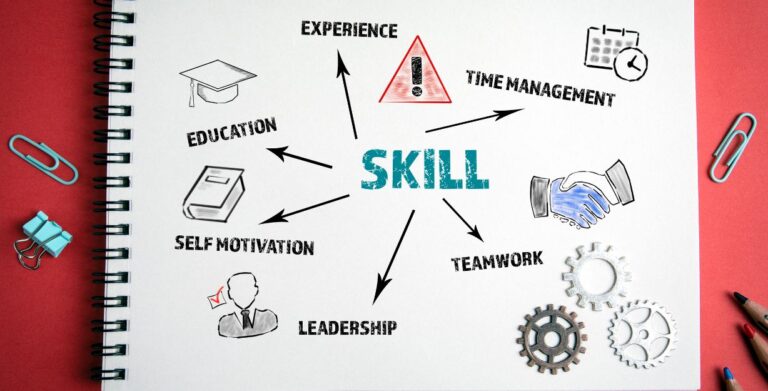Which of the Following is Not a Creative Thinking Exercise Entrepreneurs Use to Generate Ideas?
Introduction to Creative Thinking in Entrepreneurship
Creativity isn’t just about art or music—it’s an essential part of entrepreneurship. Whether you’re solving problems, developing new products, or finding ways to innovate within an industry, creative thinking allows you to step outside of conventional approaches. Entrepreneurs constantly seek new methods to break the mold and gain an edge over competitors.
Why Entrepreneurs Need Creative Thinking
Creative thinking helps entrepreneurs break through barriers that limit growth and innovation. It’s the fuel behind groundbreaking ideas and approaches that change industries. Without creativity, entrepreneurship can become stagnant, relying only on traditional methods, which may not be enough in today’s rapidly evolving markets.
Key Features of Creative Thinking Exercises
To qualify as a creative thinking exercise, a method must encourage out-of-the-box ideas, challenge assumptions, and foster innovative solutions. Creative thinking is often nonlinear, meaning it doesn’t follow a predictable path. It often involves open-ended questions, divergent thinking (generating multiple possible solutions), and the suspension of judgment to allow for a free flow of ideas.

Common Creative Thinking Exercises Used by Entrepreneurs
Brainstorming
Brainstorming is a go-to method for many entrepreneurs. This technique encourages spontaneous ideas from a group or individual. The goal is to generate as many ideas as possible without immediate judgment or analysis. Later, these ideas can be evaluated for feasibility.
Mind Mapping
Mind mapping visually organizes information, showing relationships between ideas. Entrepreneurs often use this technique to explore all aspects of a problem or to visualize how various ideas connect.
SCAMPER Technique
The SCAMPER technique stands for Substitute, Combine, Adapt, Modify, Put to another use, Eliminate, and Reverse. It provides entrepreneurs with a structured way to think creatively about existing products or services, allowing them to innovate through modifications and new applications.
Lateral Thinking
Lateral thinking encourages viewing problems from new angles, stepping outside of conventional logic. Entrepreneurs use lateral thinking to develop innovative solutions that would otherwise be overlooked through traditional methods.
Six Thinking Hats
Developed by Edward de Bono, this method involves thinking from multiple perspectives, symbolized by different colored hats. Each hat represents a different type of thinking (e.g., emotional, logical, optimistic), allowing entrepreneurs to explore problems comprehensively and creatively.
SWOT Analysis
SWOT analysis is often mistaken as a creative thinking tool, but it primarily focuses on structured evaluation. It helps entrepreneurs assess Strengths, Weaknesses, Opportunities, and Threats. While SWOT analysis is important for strategic planning, it is more analytical than creative.
Reverse Brainstorming
Instead of focusing on how to solve a problem, reverse brainstorming encourages participants to think of ways to create a problem or worsen a situation. By exploring negative ideas, entrepreneurs can often discover new creative solutions.
Role-Storming
Role-storming involves taking on different personas or roles when brainstorming. For example, an entrepreneur might ask, “What would my competitor do?” or “How would a customer view this problem?” This helps generate fresh ideas from different perspectives.
Which of the Following is Not a Creative Thinking Exercise?
Some techniques are often confused with creative thinking but are actually more structured or analytical in nature. Let’s examine a few:
Traditional SWOT Analysis
While SWOT analysis is useful for assessing the internal and external factors affecting a business, it is primarily an analytical tool rather than a creative thinking exercise. It focuses on logical, data-driven assessment rather than the free-flowing generation of new ideas.
Linear Problem-Solving
Linear problem-solving is another method that isn’t truly creative. It follows a step-by-step process, where each step builds on the last. While effective for certain tasks, it lacks the flexibility and open-ended nature required for true creative thinking.
Step-by-Step Analytical Approach
Similar to linear problem-solving, this approach relies on breaking down problems systematically. It is more about following a formula than experimenting with unconventional solutions, which is the core of creative thinking.
How to Identify Creative Thinking vs. Structured Thinking
Creative thinking often appears chaotic and spontaneous, while structured thinking is more orderly and methodical. If a technique focuses on judgment, analysis, or logical progression, it’s likely a structured thinking exercise. On the other hand, creative thinking will prioritize flexibility, imagination, and unpredictability.
Benefits of Creative Thinking for Entrepreneurs
Creative thinking helps entrepreneurs:
- Innovate faster
- Discover unique solutions to problems
- Adapt to market changes
- Break away from competitors by offering something new
- Foster a culture of creativity within their teams

Common Misconceptions About Creative Thinking
One common misconception is that creativity can’t be taught—it can. Through practice and the use of the right techniques, anyone can become more creative. Another misconception is that creativity only applies to certain fields. In reality, it’s essential in every aspect of business, from marketing to operations.
When to Use Creative vs. Structured Thinking
Creative thinking is ideal when facing complex problems, coming up with new products, or exploring untapped opportunities. Structured thinking, on the other hand, is better for refining ideas, implementing strategies, or evaluating risks. Knowing when to switch between the two is key to entrepreneurial success.
Real-Life Examples of Creative Thinking in Entrepreneurship
- Elon Musk’s Tesla used lateral thinking to disrupt the automotive industry.
- Steve Jobs’ Apple leveraged brainstorming and mind mapping to revolutionize technology with products like the iPhone.
- Airbnb used the SCAMPER technique to turn everyday homes into profitable business ventures.
Barriers to Creative Thinking in Entrepreneurship
Fear of failure, overly rigid structures, and lack of diversity in thought are some of the main barriers to creative thinking. Entrepreneurs need to foster a culture that encourages risk-taking and fresh perspectives.
How to Foster a Creative Mindset as an Entrepreneur
To cultivate creativity, entrepreneurs should:
- Encourage open dialogue and idea-sharing within teams
- Experiment with different creative thinking exercises
- Take regular breaks to avoid burnout
- Stay curious and constantly learn from other industries
Creative Thinking Tools for Entrepreneurs
There are many digital tools available, including:
- Miro for mind mapping
- Trello for project management with a creative twist
- XMind for brainstorming and idea visualization
Wrap Up
Entrepreneurs rely heavily on creative thinking to drive innovation and success. While many exercises encourage creativity, some, like SWOT analysis and linear problem-solving, lean more toward structured thinking. By understanding the differences and knowing when to use each, entrepreneurs can enhance their ability to generate groundbreaking ideas and stay ahead of the competition.
FAQs
- What is the SCAMPER technique?
The SCAMPER technique is a method used to generate creative ideas by making modifications to an existing product or concept. - How does lateral thinking differ from logical thinking?
Lateral thinking involves looking at problems from unconventional angles, while logical thinking follows a more straightforward, step-by-step approach. - Is SWOT analysis a creative thinking tool?
No, SWOT analysis is more of an analytical tool than a creative thinking exercise. - Can creativity be taught?
Yes, creativity can be nurtured through practice, techniques, and a willingness to think outside the box. - Why is creative thinking important for entrepreneurs?
Creative thinking enables entrepreneurs to innovate, adapt, and stay competitive in fast-changing markets.






